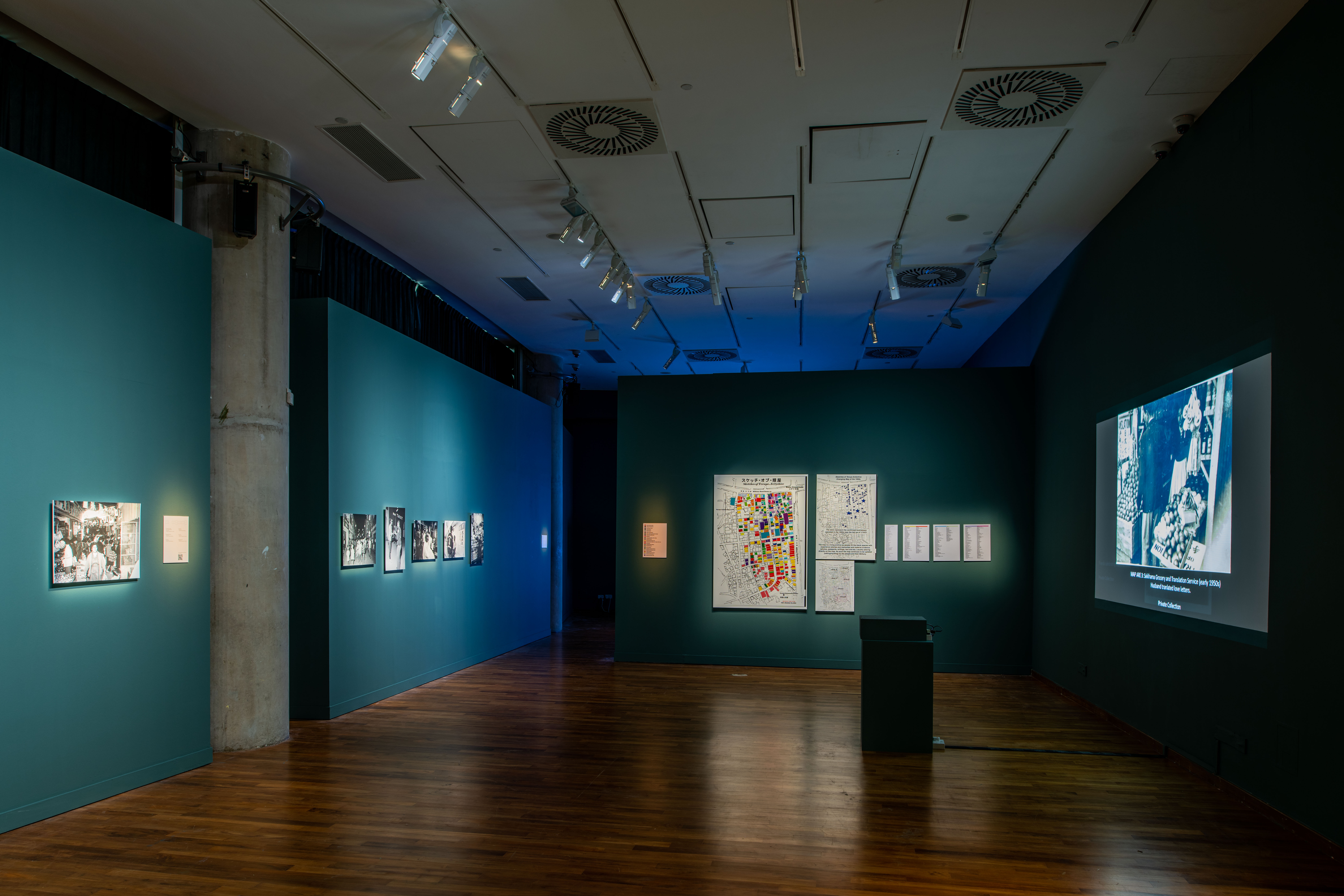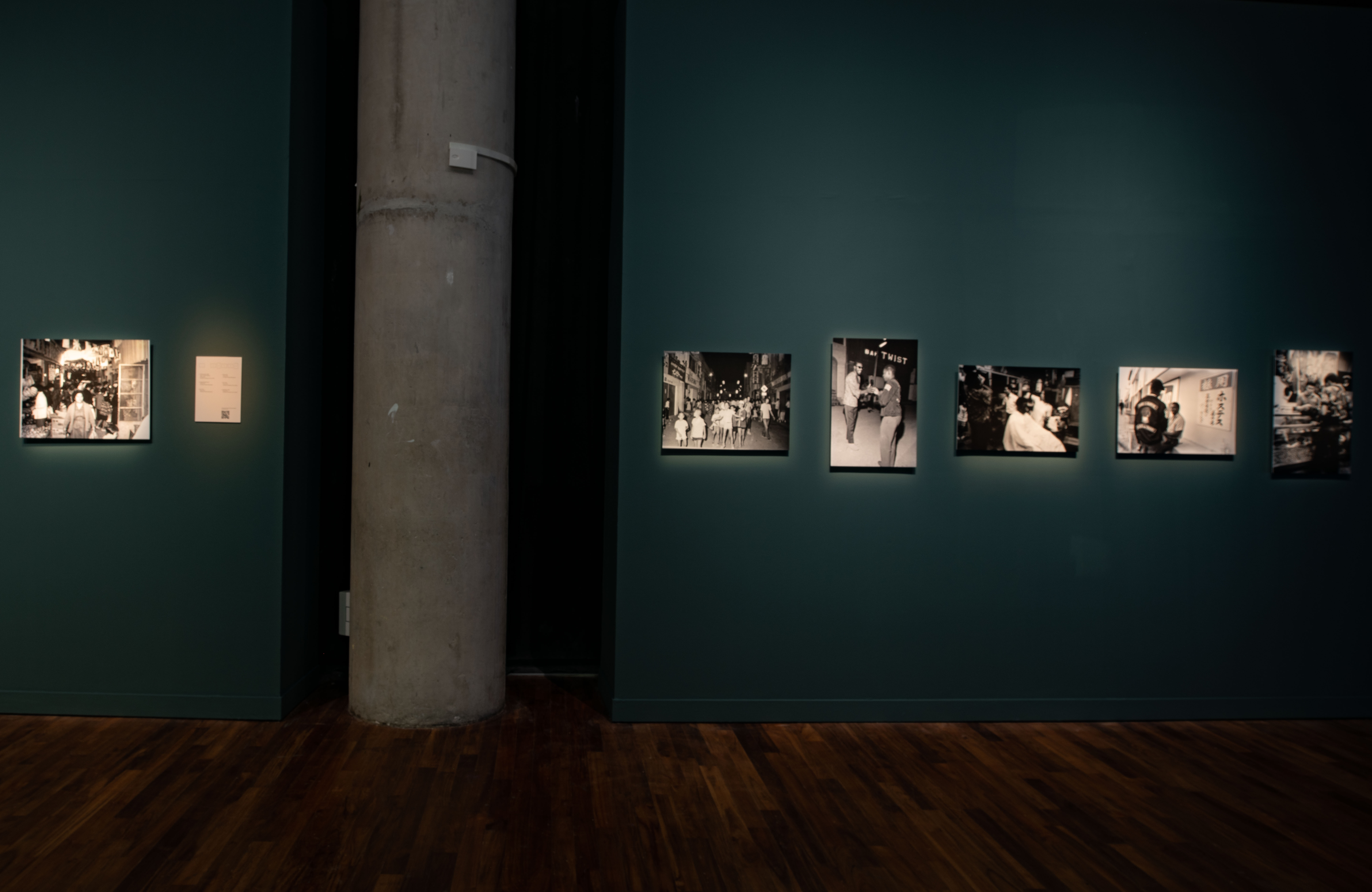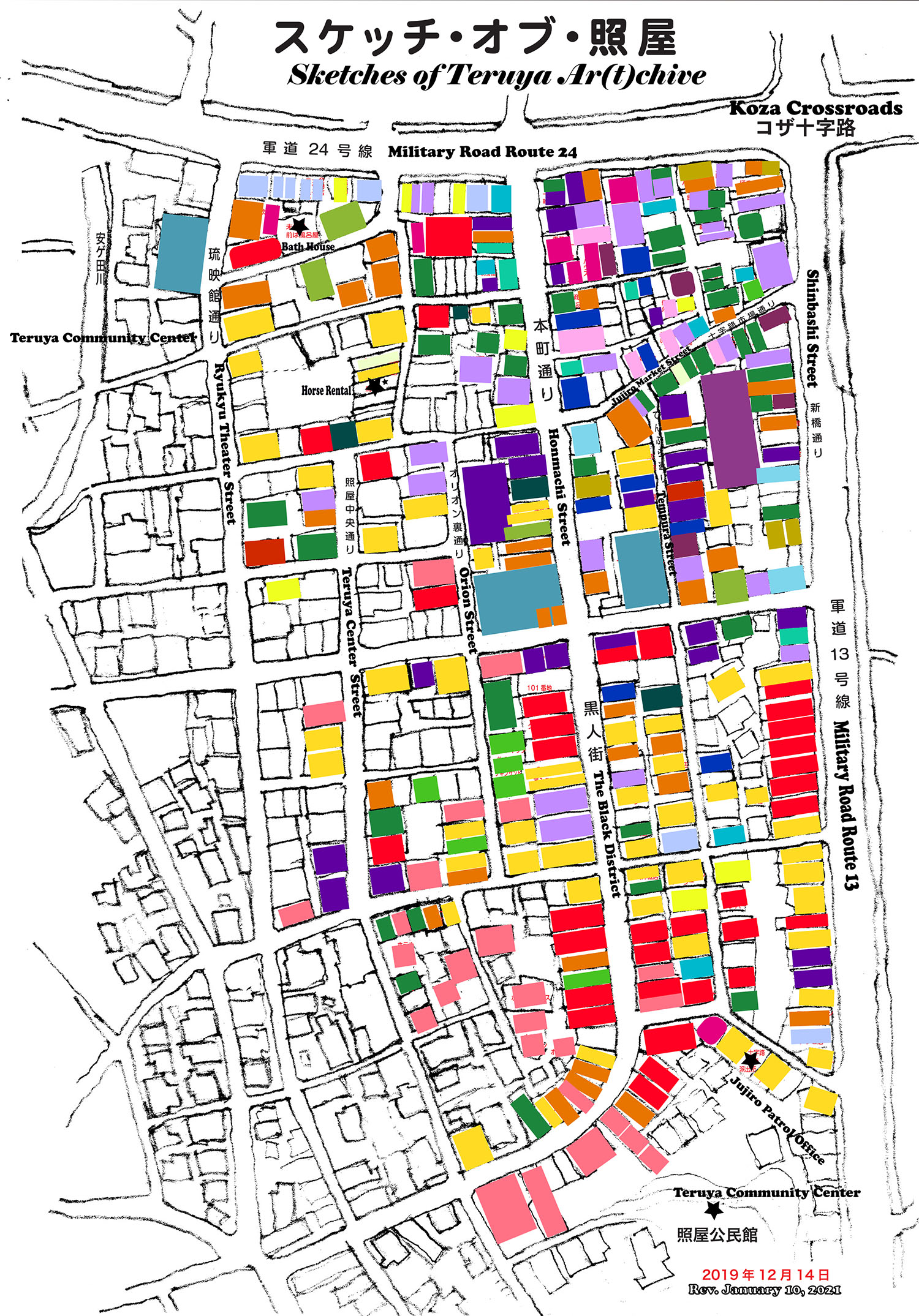Ariko S. Ikehara
Sketches of Teruya Ar(t)chive
2021
Mixed media installation
featuring 3 maps,
photographs and projection
Variable Dimensions

This installation is based on Sketches of Teruya (January-March 2020), an exhibition that Ikehara developed and presented for Koza X MiXtopia Research Center, an independent art and research space she opened in Teruya, Okinawa. It features updated maps of Teruya, a district in Okinawa that thrived economically after World War II in the shadow of the American Occupation of Okinawa (1945-1972). Functioning as both artwork and archive, Ikehara’s maps are a form of “miXtory,” a term she uses to describe her methodology of weaving together the meta-narratives of history, personal stories, and the gaps or questions that emerge between history and memory. Ikehara describes this interplay in the map as performative, referring to the map as “an object that solicits the viewer into action [by] filling the gap of what is missing on the map, and translating the personal miXtory into material forms, i.e., [turning] object, event, performance into an archive.” Teruya represented three economic zones, which were active for more than twenty-three years after the American occupation from 1952 to 1976: Honmachi Dori, a shopping district; Koza Ichiba, a market district; and the Black District, a bar and entertainment district. The latter district served African-American soldiers in the military. During this time, Teruya's mixed racial, ethnic, cultural, language, and national geography also included people who were Japanese, Chinese, Vietnamese, Italians, Indians, Koreans, Filipinos, and the children of mixed-racial ethnicities. Postwar economic opportunities offered to foreigners in constructing the American military bases and other business ventures drew a diverse range of people to Teruya. Through their will to survive and thrive, they created what Ikehara describes as a postwar economic miracle. They created, in her words, “a community in which everyone had a chance of making, creating and imagining how to live in the company of others while negotiating difference.” Ikehara grew up in Teruya and some of the locations on the map are based on her memories, interviews, and what she calls yuntakuviews (yuntaku translates to “chatting” in Okinawan).
Ariko S. Ikehara is Director at Koza X MiXtopia Research Center in Okinawa. She earned her Ph.D. in Comparative Ethnic Studies at the University of California, Berkeley, in 2016. She was a Postdoctoral Fellow at Osaka University (2017-19) and a Visiting Scholar in the Department of Gender and Women Studies at UC Berkeley (2016). Her peer-reviewed publications include “Champuru Text: Postwar Okinawan Writing,” in Beyond American Occupation: Race and Agency in Okinawa, 1945-2015 (2017), and “Third Space as Decolonial Con/Text: Okinawa’s American Champuru,” in Transnational Asia: An Online Interdisciplinary Journal 1, no.1 (Fall 2016). Since 1995, she has published essays and articles in Japanese about Teruya in Okinawan journals and local Okinawan newspapers. She is currently working on two book projects: a two-volume book manuscript in Japanese and English with the working title, A Book of Teruya, and a book manuscript in English with the working title Okinawa’s MiXtopia: Teruya Soul MiXtory, which is a choreographic study of Teruya.




